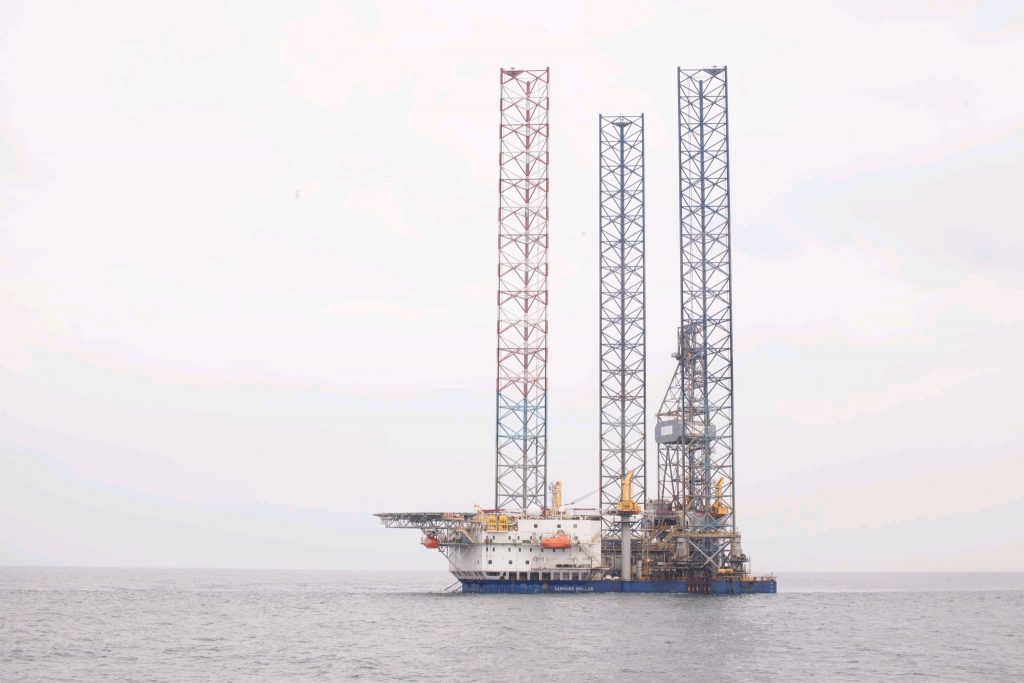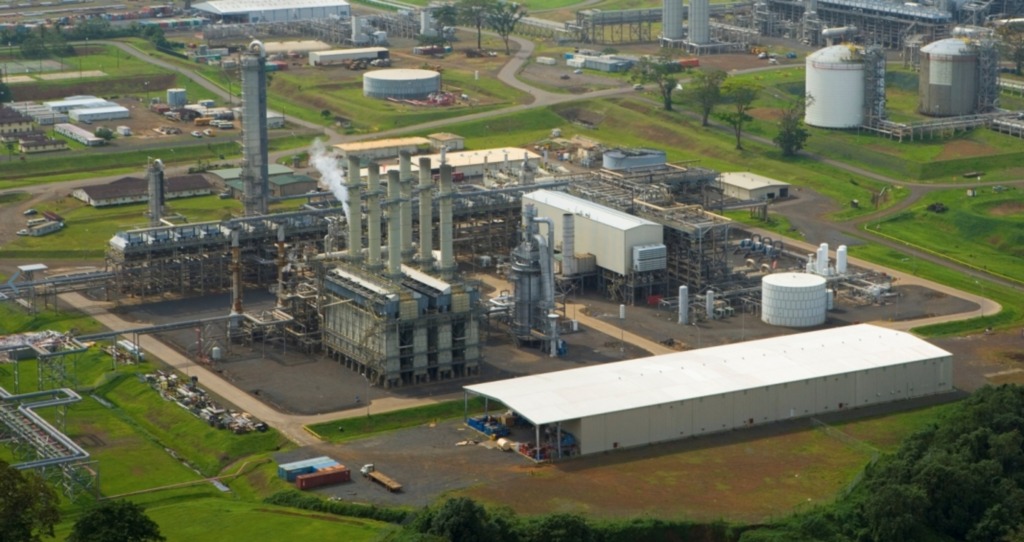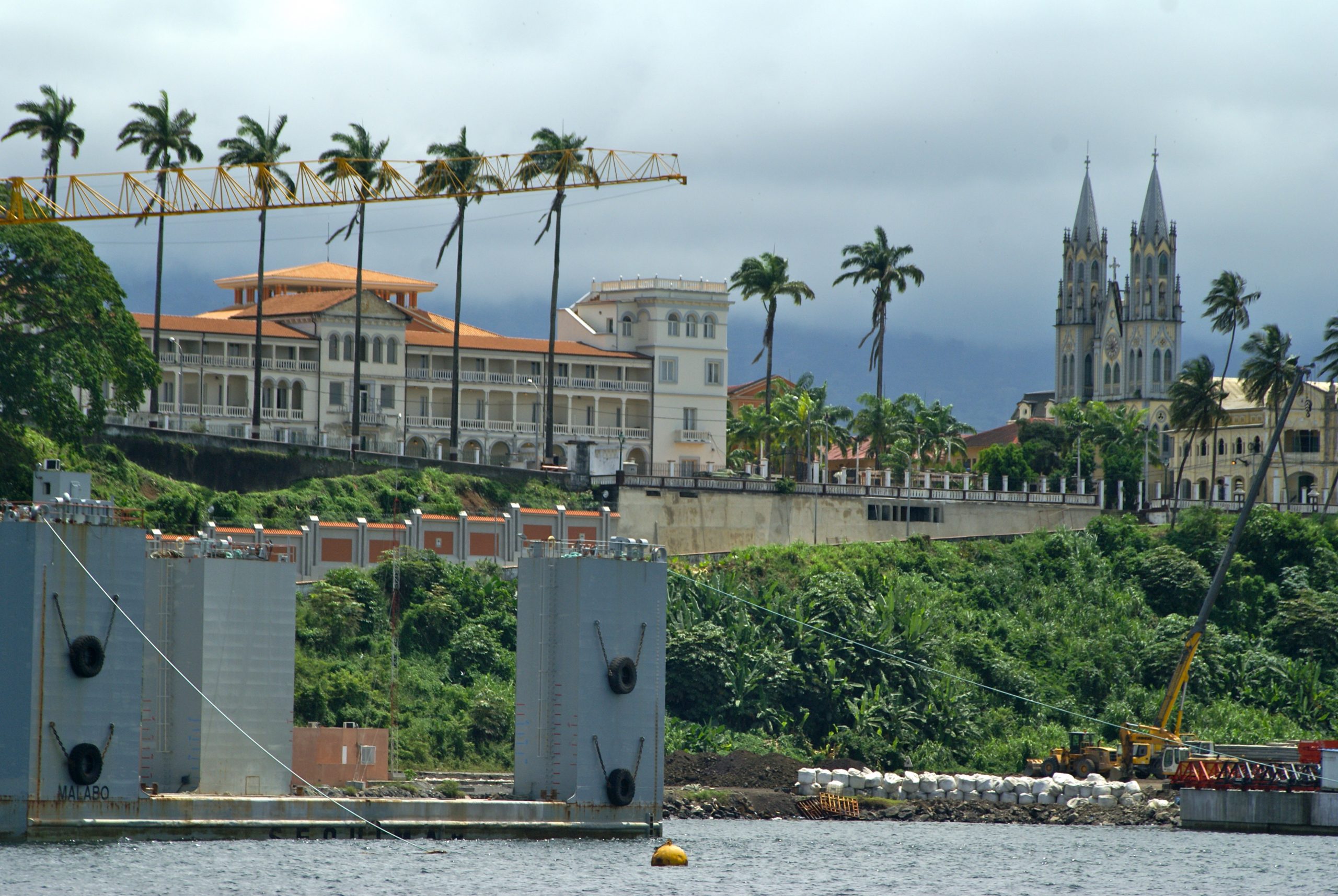Equatorial Guinea’s economy will be in recession over the 2022 – 2026 period according to the International Monetary Fund (IMF)’s latest forecast. Not only will it be amongst the very few economies whose GDP does not grow and recover from the Covid-19 pandemic, it will be the world’s worst performing economy for the next five years and the only one in Africa with a negative GDP growth.
2021 will provide some respite for the country, with GDP growth expected at +4% by the IMF and +2.6% by the African Development Bank (AfDB). It will notably be supported by the rebound in oil prices and the completion of the Alen Gas Monetisation project in February 2021. The project has notably established a link between the Chevron-operated Alen Unit and Punta Europa, ensuring new and reliable supply of gas feedstock to Equatorial Guinea’s methanol, LPG and LNG facilities. But progress stops here because Equatorial Guinea should enter a 5-year recession in 2022.
Source: IMF
How did the country get here?
Equatorial Guinea is one of Africa’s least diversified economy and while other oil producers can often rely on their non-oil GDP to support growth during times of market volatility, Equatorial Guinea cannot. In 2020 for instance, non-oil sectors experienced a decline of -4.7% while investment contracted by 35%, according to the AfDB. Equatorial Guinea does not have a strong agriculture sector, has not developed tourism and is yet to exploit its mining and minerals potential in the Rio Muni.
While those represent all tremendous investment opportunities, the country’s risk and corruption perception has deterred investors. In the last World Bank’s Ease of Doing Business Index, Equatorial Guinea ranked 178th out of 190th, preceding only the two Congo’s, Chad, the Central African Republic, South Sudan, Libya, Eritrea and Somalia. More importantly, it performed the least in the “starting up a business category”, demonstrating how challenging its business climate remains for entrepreneurs and new investors.
Overall, the country’s main risk factor, beyond the persistence of the pandemic, remains the lack of diversification of its oil-based economy. To this, one must add the structural weakness of inadequate human capital due to under-investment in education and the overall skilling of the population.
But the real unexploited potential remains that of its natural resources sector. Equatorial Guinea reached its peak production of oil & gas back in 2005 and all its producing fields are maturing and have been onstream for decades. They include Alba (1991), Zafiro (1996), Ceiba (2000), Okume (2006), Aseng (2011) and Alen (2013). Put simply, Equatorial Guinea has not developed a new major oil & gas project in a decade.
As a result, output keeps declining and currently stands at just over 150,000 barrels per day (bpd) including 100,000 barrels of oil and the rest of gas and condensate. This makes the country sub-Saharan Africa’s 7th producer only, after Nigeria, Angola, Congo, Gabon, Ghana, and South Sudan.
Equatorial Guinea’s under-performance in developing its hydrocarbons sector is not for lack of potential, far from it. It is rather the result of missed opportunities throughout the past decade.
In 2007, the country became sub-Saharan Africa’s second LNG exporter with the opening of the 3.7 mtpa EG LNG export terminal. The one-train facility was supposed to be immediately expanded with a second train: portions of the front-end engineering and design had been completed by the time train 1 was commissioned and a final investment decision (FID) was expected as early as 2008. It never happened.
Another major opportunity to develop the country’s rich gas reserves came with the development of the Fortuna, Tonel and Vsicata fields on former Block-R via a 2.2 million tonnes per annum (mtpa) floating LNG unit. Ophir Energy and Golar LNG were expected to commission the project in 2019 but failed to secure financing, leading the government to strip Ophir of its license over Block R (now renamed Block EG-27). While LUKOIL won the acreage in the 2019 bidding round, a formal license is yet to be awarded. Meanwhile, several other FLNG projects have made progress around the continent, including in Mozambique, Senegal, Mauritania, and Nigeria.
But the oil sector too has had its bunch of missed opportunities. EG Ronda 2019 did manage to attract the interest of some regional and global players, but delays in awarding licenses and signing PSCs have left bidders discouraged. Meanwhile, ExxonMobil has sought to divest from the giant Zafiro oilfield for a few years, but any potential transaction has been stuck in political considerations or blocked by a government that has become too picky, according to industry sources.
Trident Energy, the independent that successfully took over the operatorship of the Okume and Ceiba complex from Hess in 2017, has repeatedly expressed its interest in buying ExxonMobil’s 71% stake in Zafiro. The company has demonstrated its ability to successfully operate brownfield assets but was constantly blocked in its bid to take over the asset. As a result, the field that once produced over 200,000 bpd is now producing well under 100,000 bpd. Last year, ExxonMobil’s net production from Zafiro stood at 31,000 bopd against 53,000 bopd a decade ago.

Unless significant strides are made on projects like the Fortuna FLNG, the expansion of downstream gas infrastructure and the redevelopment of producing assets, the IMF’s negative growth forecast is very likely to materialize.
Equatorial Guinea has the resource base, geographical location and experience to turn into a significant downstream oil and gas hub in the Gulf of Guinea. But while the ongoing development of the offshore gas megahub is promising, it would need to happen a lot faster and reach the extent where the pooling of stranded offshore gas does more than just maintain nameplate output at Punta Europa.
The Alba Plant already exports significant amount of LPG to West and Central Africa, where most markets are hungry for LPG and experiencing LPG demand growth rates or 20% of more. But a new LNG train could also be constructed at EG LNG while additional downstream industries such as petrochemicals could easily be developed and serve the rest of the region. West and Central African markets are growing fast and need these supplies.

For now, activity is expected to be supported by VAALCO’s upcoming development of the Venus field on Block P. The project could rely on a jack-up production unit and a floating, storage and offloading (FSO) vessel or maybe even an FPSO if additional reserves are found at SW Grande during drilling. But Equatorial Guinea needs several additional such developments if its economy is to flourish again.

